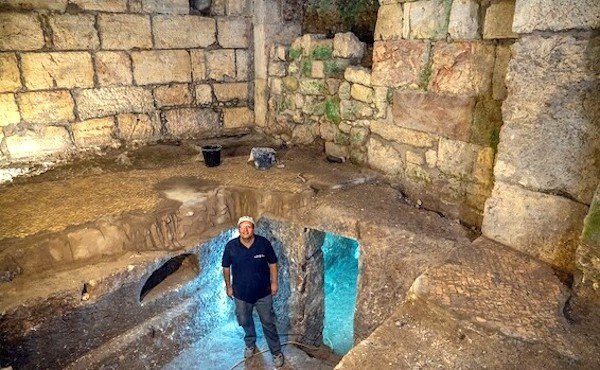Ancient complex found near Kotel puzzles experts
that dates back to the Second Temple era has recently been excavated at the foot of a 1,400-year-old building near the Western Wall. On Tuesday, the Israel Antiquities Authority and the Western Wall Heritage Foundation presented the first images of the complex, which is located beneath the entrance lobby to the Western Wall Tunnels site.
Archaeologists said this was the first time a complex of this type has been discovered near the Kotel.
The complex was exposed for the first time in two millennia by students from several pre-military academies, who take part in archaeological digs under an initiative designed to instill a sense of heritage. The IAA wants to connect today’s youth to their cultural past.
Researchers think the complex, which includes two rooms and an open courtyard that are arranged on three levels, connected by stairs carved out of rock, was used by Jerusalem residents in early Roman times, before the city was sacked and the Temple was destroyed. It sits beneath the mosaic floor of a building from the Byzantine period.
In addition, the complex raises an intriguing question that has not yet been answered. Dr. Barak Monnickendam-Givon and Tehila Shadiel, who are directing the excavation for the IAA, said that “this is a unique find. This is the first time that an underground complex has been discovered near the Western Wall. You have to understand that 2,000 years ago – like today – it was customary to use stones to build in Jerusalem.
“This begs the question, why was such great effort and resources invested in carving underground rooms out of rock,” the archaeologists said.
“The wealth of finds being discovered in the dig gives us a glimpse into the day-to-day lives of the residents of the ancient city. Among other things, we found cooking vessels made out of refined clay; dozens of oil lamps made of clay; a stone mug and a fragment of a vessel used to cleanse the hands and hold water that was used for some of the rituals of purification in the time of the Temple,” Monnickendam-Givon said.

 47.0°,
Light Drizzle Fog/Mist
47.0°,
Light Drizzle Fog/Mist 




